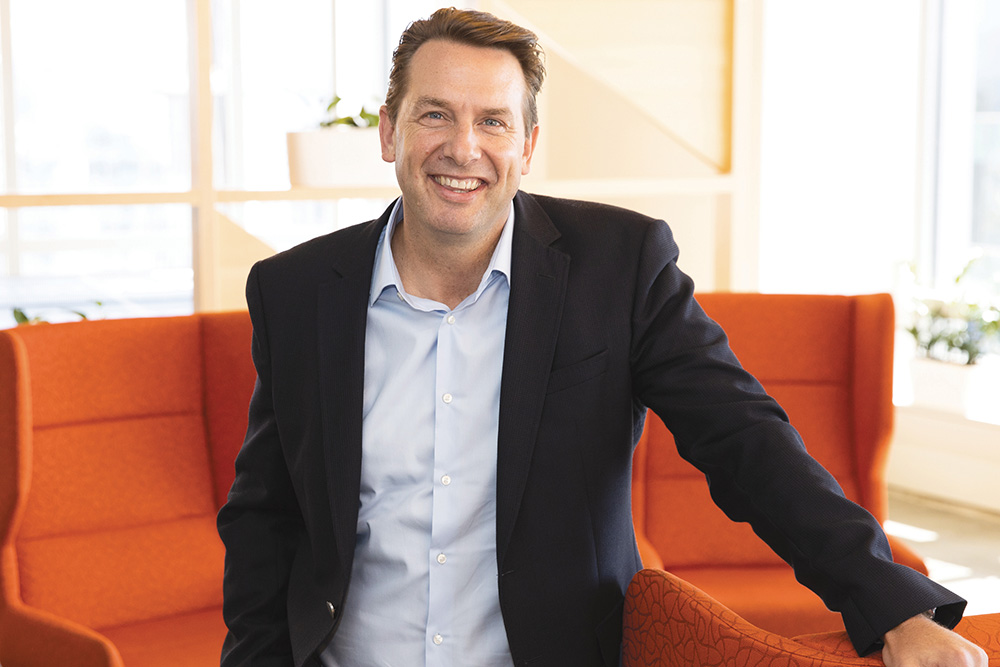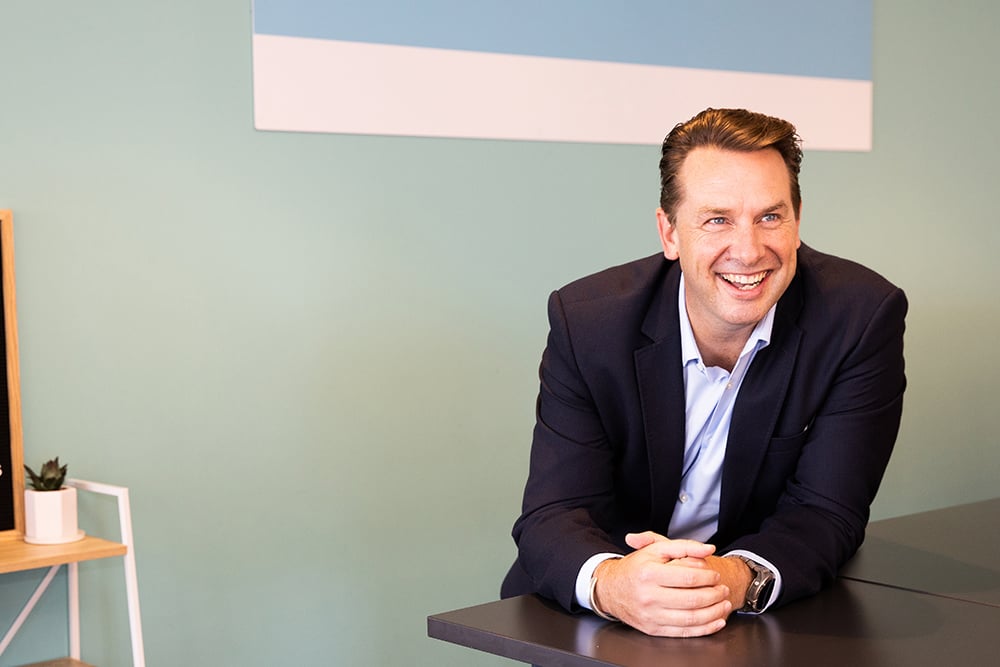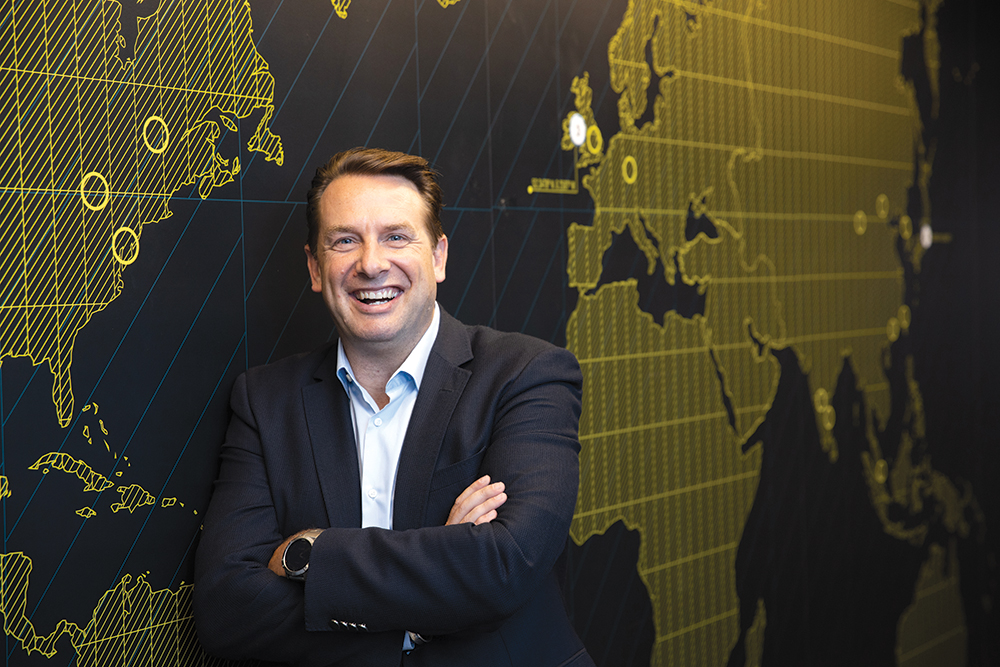When it comes to blockchain, New York City leads. The San Francisco Bay Area boasts a high-growth startup ecosystem. London is the fintech capital of the world. Tel Aviv is the expert in cybersecurity. And Stockholm is second only to Silicon Valley in terms of producing the most unicorns – companies valued at more than US$1 billion.

While Melbourne is considered a leading tech hub in Australia, lovingly referred to as the country’s ‘innovation darling’, for Amazon Web Services (AWS) Australia and New Zealand Managing Director Adam Beavis, that’s still not enough.
He and his team have one main objective and that’s to put the two nations in their entirety on the map as world-leading innovation hubs. “We are so passionate about seeing Australia and New Zealand on the world stage for innovation,” he shares.
“It’s what gets us out of bed every day. We make a huge impact on organisations as they move forward and go global, helping to really drive the digital transformation for the Australian economy.” Dubbing this year the “year of data”, Adam strongly believes digital transformation is critical to increasing productivity.
“At Amazon, we pioneered the cloud. And the cloud really provides that productivity; mainly because it provides us with the speed to adapt, experiment and implement change,” he explains.
“In the past, building chatbots, call centres and deploying new applications used to take a long time – weeks, months and even years. Today, we’re doing it in minutes, hours and days. That’s one of the big changes people see when they start working with this on the cloud – most of the heavy lifting has already been done, so organisations can get going a lot quicker and become productive a lot faster.”
AWS has been in the Australia–New Zealand region since 2012. In less than a decade, the organisation has amassed incredible success and high-profile partners to boot – think Atlassian, Deloitte, Visy, Canva and Qantas to name a few.

More importantly, however, it’s been a godsend to the area’s vast array of businesses ranging from startups to fintech, those in mining and everything in between. “We’re seeing some great success stories out of Australia,” Adam beams.
“Since we’ve opened, we’ve invested more than A$3 billion in both infrastructure and remuneration, which is a great thing for the Australian economy.”
A subsidiary of American multinational technology company Amazon, AWS is an IT service management company that provides on-demand cloud computing platforms and application programming interfaces to individuals, organisations and governments on a metered, pay-as-you-go basis to help them scale and grow. Because for AWS, the customer is at the centre of everything it does.
“The thing that really excites me and my team is working with our customers,” Adam says. “It’s the part we all love about our job. We love working closely with our customers on their big problems. We say, ‘Tell us a problem in your business and let us go and solve it.’”
Risk-taker
In the early 1990s, Adam was working at Blockbuster. While he didn’t exactly know what he wanted to do career-wise, he was definitely always a risk-taker. So while taking his buddy up on a suggestion to apply for a job in technology wasn’t that surprising, landing the gig surely was.
“When I landed my first job in IT, the manager at the time looked at me and said, ‘You don’t actually know much about technology, do you?’” he remembers with a snigger. “I was honest and told him no. And then he said that if I stayed back every night, he’d teach me everything I needed to know about computers.
I love being on the cutting-edge side of things.
“So for two years, I stayed back every night and cleaned computers while he taught me everything I needed to know about technology. Today, he’s still a great friend and mentor. And that’s where my curiosity grew from. From that point on, I knew that I always wanted to stay at the forefront of technology because I really enjoy the consistent change of the industry. I love being on the cutting-edge side of things.”
Today, Adam is killing it in the industry. After Blockbuster, he joined HP as a technical assistant before moving on to Byte Information Technology.
Starting first as Project Manager, in three short years he moved up the ranks to Business Development Executive creating infrastructure solutions, managing accounts and prospecting for new business among other tasks.
Transforming a business
Adam proclaims 2021 as the “year of data”. As such, he believes companies need to take a good, hard look at how data can impact their businesses and drive greater efficiency. Here, he offers four tips for all Australian and New Zealand CEOs to consider when digitally transforming their organisations. “We spend a lot of time working with CEOs on these four things because, without them, digital transformations often derail,” Adam explains.
1. Get aligned as a business. Get together with the board and the leadership team to get aligned around the digital transformation that works best for the business.
2. Set big goals. What big goals do you want to achieve? Do you want to do more with data? Do you want to drive better insights from data within the organisation? Know what you want to achieve and dream big.
3. Train your team. Upskill all the people within your business, not just the technology teams. This way, when you start to move and accelerate, everybody’s aligned with the direction the business is heading.
4. Abandon analysis paralysis. Just get going and start experimenting because those small experiments often turn into big results. And the longer you wait and analyse things, the further you’re likely to fall behind.
Later, he worked for Express Data then VMware, CommVault, Red Hat and Thomas Duryea Logicalis before signing on with AWS in January 2014. At AWS, Adam worked as Commercial Sales Manager for nearly six years before moving up to Commercial Director, Director of Enterprise and then finally, Managing Director of Australia and New Zealand, where he has been for a little more than a year.
Having been with the business for roughly seven years, Adam knew exactly what opportunities he wanted to home in on when he took the role. “Everywhere we work with customers, we work across three areas: modernising their businesses and infrastructure, and working with them on data,” he reveals.
“But the area we saw that we could really have an impact on in Australia and New Zealand was skills. Looking forward to 2025, they’re predicting that skills in STEM could be lacking by some 200,000. So we began to work with not only our customers, but also with the wider Australian business community to figure out how we could increase these skills for people.”
Skill Building
So far, AWS’s work in the skills area has been nothing short of incredible. The leader in cloud services recently partnered with Melbourne’s Swinburne University of Technology to establish the Cloud Innovation Centre – the first of its kind in the Southern Hemisphere – which uses cloud technologies to drive social good by finding solutions to real-world health, wellbeing and social challenges affecting Australia today.
We were certainly on the front line and continue to be on the front line, working with customers on COVID-19.
“At Swinburne University, we also developed our first cloud degree,” Adam says. “And now, the other area we’re working on is re-skilling people, as one of the downsides of the pandemic has obviously been unemployment. So last year, we developed a program to help re-skill people who are looking for a career in IT.”
This program is a three-month course that is entirely funded by AWS, and anyone can take it. “The people in this course don’t have to have any prior skills in technology,” he shares.
“During the course, we teach them all about technology, different types of IT, different roles within IT and the way organisations are using technology today. It’s quite refreshing how people can now pivot their careers by working with us.”
Once the course is complete, participants don’t just receive a completion certificate before they’re sent on their way either. At the end, AWS helps shape them for the type of role they need to perform.
“We help them work on their CVs and apply for new careers in IT,” Adam points out. “It has been one of the most rewarding programs that I’ve actually worked on with the team.”
He’s seen everyone from a 24-year-old former football player with an interest in IT to a 37-year-old mum of two kids who never thought she’d have a career in IT become AWS course success stories. On the other side of skilling, AWS also helps enable its larger training organisations to continue upskilling themselves.
In December 2020, AWS Australia and New Zealand announced plans to open a second region in Melbourne at the end of 2022. It’s expected to generate 150 jobs across areas like plant engineering and security.
“We see it as a critical part of their transformation,” Adam says. “We are working with organisations like Deloitte, which is currently retraining 4,000 people and is about to train 1,400 new people in cloud skills, as well as industry leaders like Atlassian and Adobe on developing a course for people looking to change their career with the Skill Finder platform in areas like robotics, artificial intelligence and cybersecurity – courses people wouldn’t have normally looked at. It’s really exciting.”
Sustainability and innovation
Last year, Amazon as a whole was the largest ever corporate purchaser of renewable energy. By doing that, the global powerhouse made a big statement of just how serious it is in reaching its goals of being entirely carbon neutral by 2040.
And some of the work that it’s already kicked off in Australia is helping it reach that target. “Last year, we announced our first big sustainability projects: two solar farms in New South Wales and a wind farm down in Victoria,” Adam tells.
“When they are online, they’ll be able to power 115,000 homes each year. And these are the types of projects that as an Australian-New Zealand business we’re most proud of.
“We’re committed to using sustainability to help us solve some of the world’s biggest challenges. It’s a really big driver for us. And that’s because we see it’s very good for business, the planet and our customers.
It’s a win all around.” Solving problems is in AWS’s DNA, and Adam credits that to the organisation’s culture of innovation and its customer-centric ethos. “When you’re led by your customer, when you listen to your customer and invent on their behalf, that’s what keeps you innovative,” he says.
“If you look at the AWS platform of 175-plus services, 90% of those services came from ideas we had when working with our customers. And the other 10% are things that we know our customer needs.”
AWS has a flat structure where the team can easily bring ideas from the customer and then push those into the service side of things in the US very quickly. “That model allows us to stay ahead and drive innovation out to our teams. Our leadership principles start with customer obsession and finish with delivered results,” Adam enthuses.

“We’re a culture of builders and one of the great leadership principles we have is ownership. So if you come across a problem, then you really own that problem until you find a way to solve it. Inside our culture, we’re continually building and solving problems, which continually drives innovation within our teams.”
On the front line
When the COVID-19 pandemic struck, Adam was only a month into his new role as Managing Director. There were two things that really stuck out to him at the time. One was the incredible resilience of both AWS’s team and its customers, and the other was the rate at which the pandemic accelerated digital transformation.
According to him, it was “beyond anything we could have ever imagined” and it led to the organisation supporting its customers in different ways, especially regarding flexibility and resiliency. The companies needed to pivot, and AWS was their go-to for this transformation.
For example, Queensland telematics organisation Bigmate pivoted its business around creating products that were able to detect temperature changes in people while they were working. This innovation allowed them to help people get back to work more quickly.
And then with HungryHungry (the pioneer table ordering service in restaurants), AWS helped it pivot to a new online delivery model when restaurants were forced to close. “Closer to home, we saw a rapid increase in testing, so we worked with New South Wales Pathology to help get test results back in just 24 hours versus what was initially taking seven to eight days,” Adam shares.
“We also worked with the World Health Organization, supplying it with resources and compute capacity to help track and solve problems. We were certainly on the front line and continue to be on the front line, working with customers on COVID-19.”


